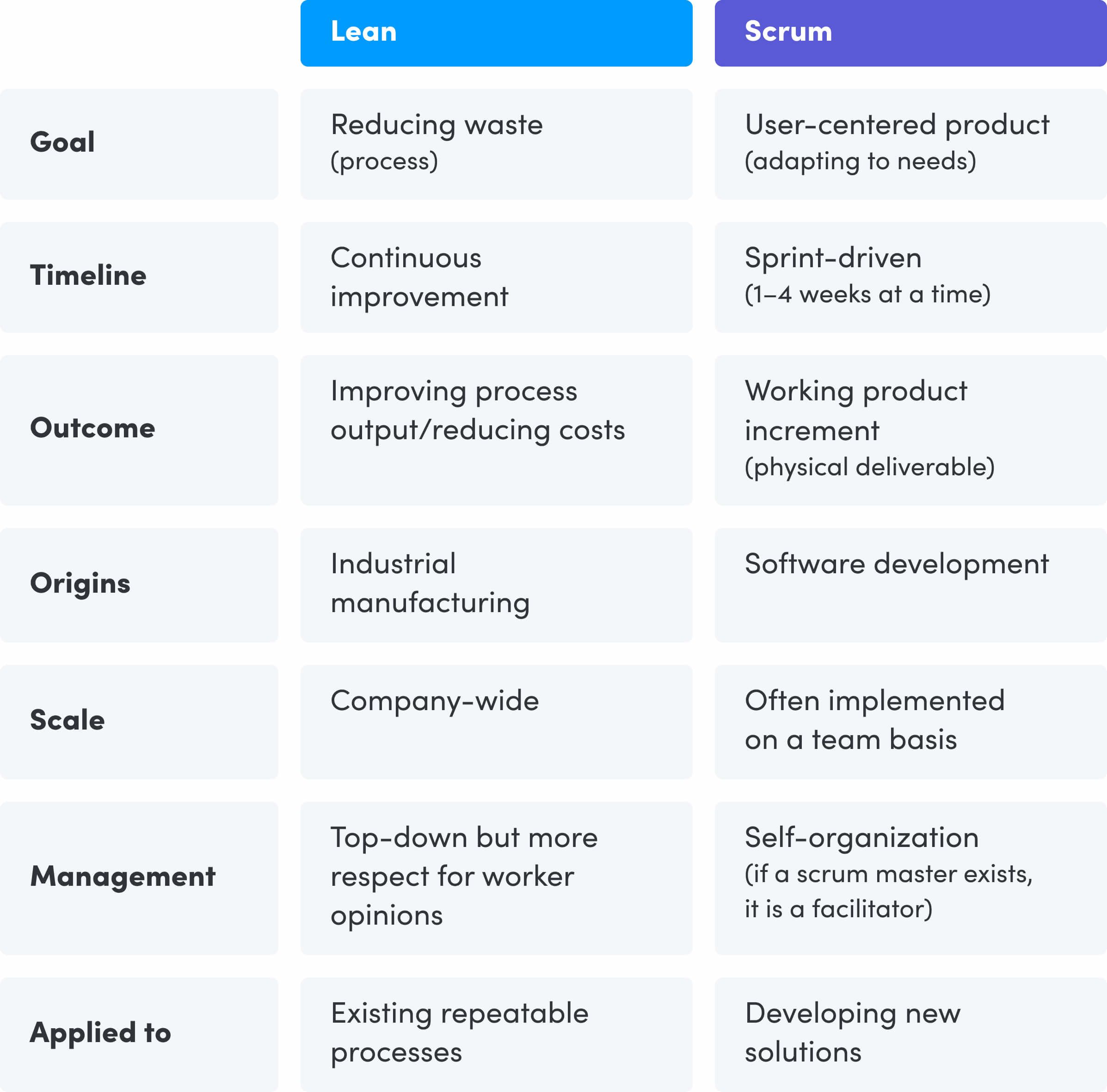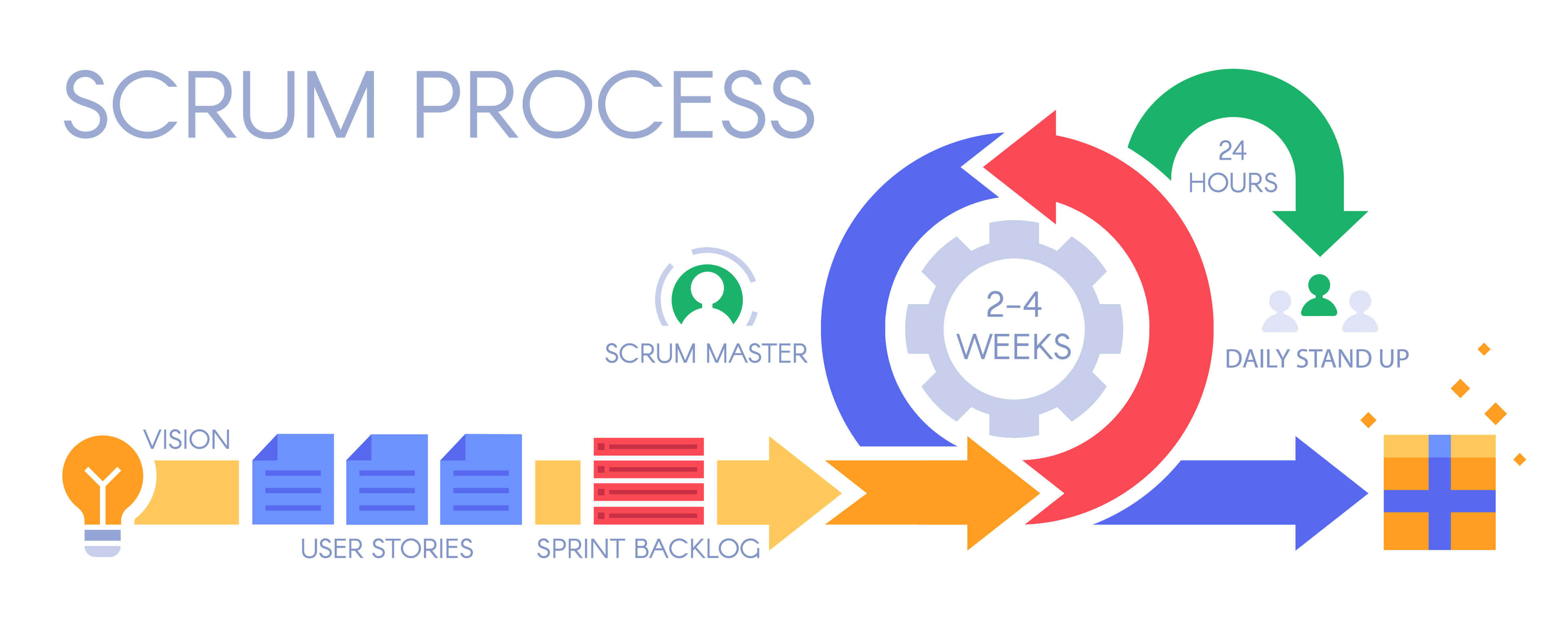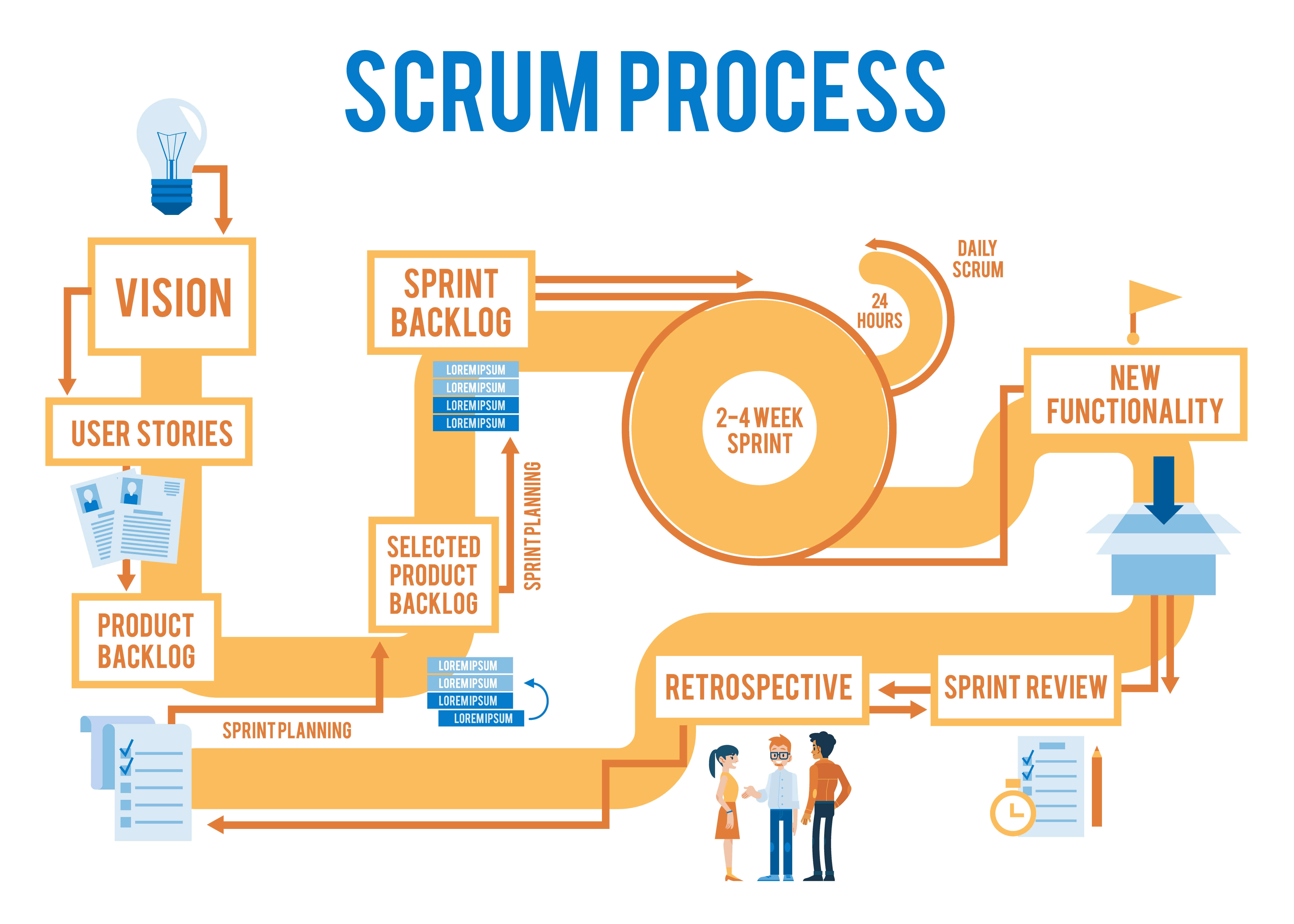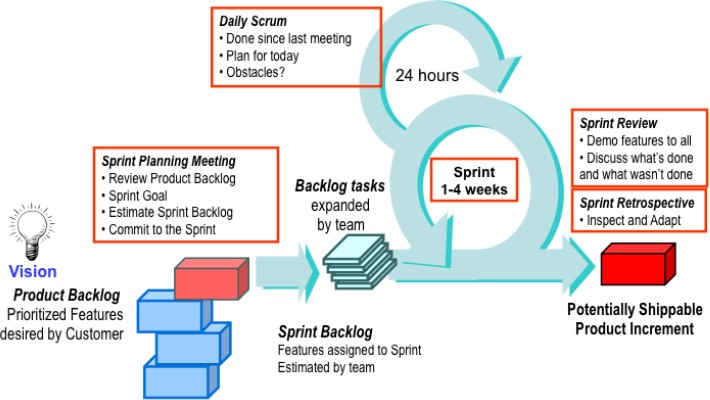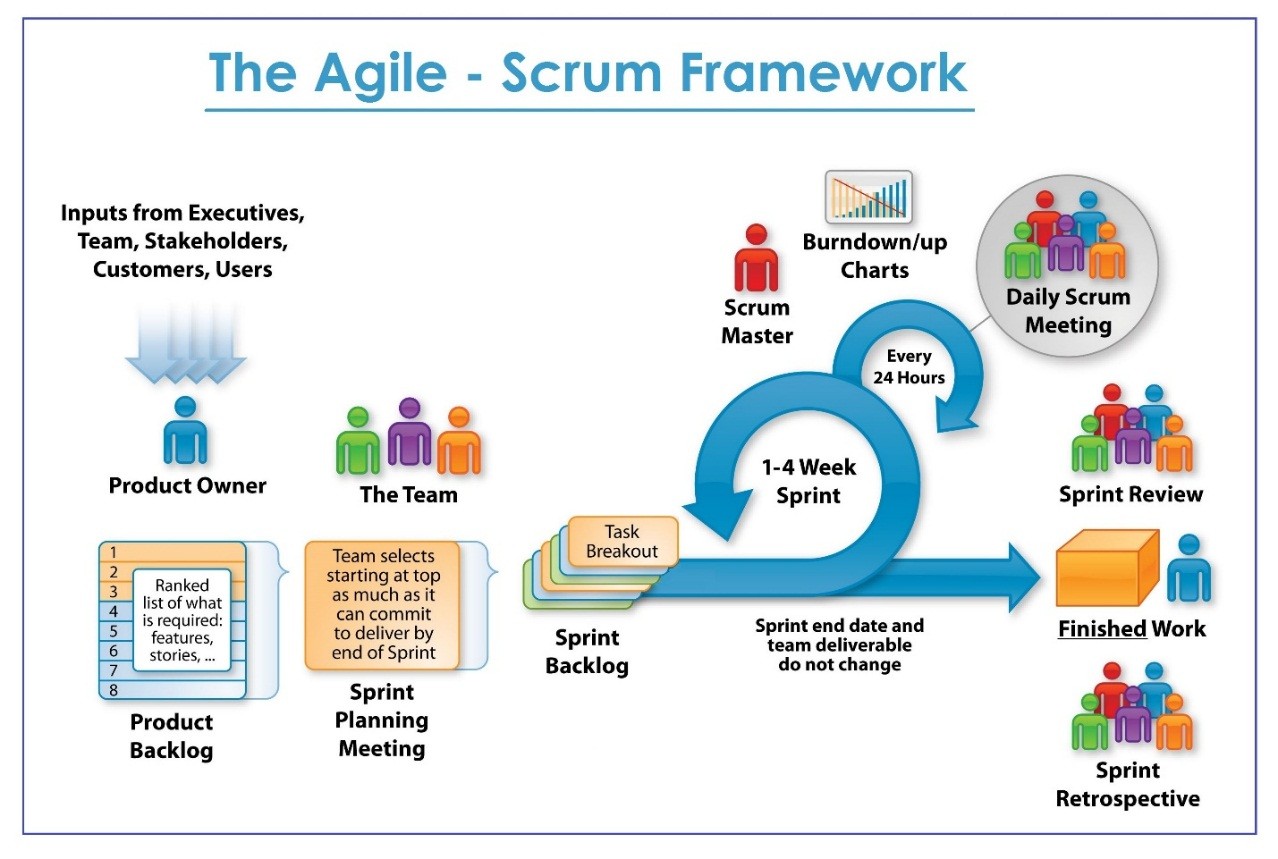Introduction: Understanding Agile Project Management
Agile project management is a methodology that emphasizes flexibility, collaboration, and customer satisfaction. It is an iterative approach that allows for continuous improvement and adaptation to changing requirements. Agile project management is based on a set of key principles, including:
Welcoming changing requirements, even late in development
Delivering functional software frequently
Business people and developers working together daily
Building projects around motivated individuals
Prioritizing face-to-face conversation
Working software as the primary measure of progress
Sustainable development, able to maintain a constant pace
Continuous attention to technical excellence and good design
Simplicity as the art of maximizing the amount of work not done
Self-organizing teams
Regular adaptation to changing circumstances
Scrum vs Agile: Key Differences and Similarities
Agile and Scrum are two terms that are often used interchangeably, but they actually refer to two different concepts in project management. Agile is a set of principles for managing and completing projects, while Scrum is a specific framework for implementing Agile principles. Agile project management is a methodology that emphasizes flexibility, collaboration, and customer satisfaction. It is an iterative approach that allows for continuous improvement and adaptation to changing requirements. Agile project management is based on a set of key principles, including:
Welcoming changing requirements, even late in development
Delivering functional software frequently
Business people and developers working together daily
Building projects around motivated individuals
Prioritizing face-to-face conversation
Working software as the primary measure of progress
Sustainable development, able to maintain a constant pace
Continuous attention to technical excellence and good design
Simplicity as the art of maximizing the amount of work not done
Self-organizing teams
Regular adaptation to changing circumstances
Scrum, on the other hand, is a specific framework for implementing Agile principles. It is a structured approach that provides a set of roles, ceremonies, and artifacts to help teams work together effectively. Scrum emphasizes transparency, inspection, and adaptation, with the goal of delivering functional product increments at the end of each sprint.
So, when should you use Scrum versus Agile? Scrum is best suited for teams that are working on complex projects with rapidly changing requirements. It is also a good choice for teams that are new to Agile project management, as it provides a clear and structured approach to getting started. Agile, on the other hand, is a more flexible approach that can be tailored to the specific needs of the project and the team. It is best suited for teams that have experience with Agile project management and are looking for a more customized approach.
The Benefits of Using Scrum for Agile Project Management
Scrum is a popular framework for implementing Agile project management due to its numerous benefits. By using Scrum, teams can increase productivity, improve collaboration, and accelerate time-to-market. One of the key advantages of Scrum is its iterative approach to project management. Instead of following a linear plan, Scrum involves breaking down the project into smaller, manageable pieces called sprints. Each sprint lasts for a set period of time, typically two to four weeks, and results in a functional product increment. This approach allows teams to quickly adapt to changing requirements and deliver value to customers on a regular basis.
Another benefit of Scrum is its emphasis on collaboration. By bringing together cross-functional teams and encouraging regular communication, Scrum helps to break down silos and foster a culture of collaboration. This not only leads to better decision-making, but also helps to build trust and strengthen relationships between team members.
Scrum also promotes transparency and accountability. By holding regular ceremonies, such as sprint planning, daily stand-ups, sprint reviews, and retrospectives, Scrum provides a clear structure for teams to track progress, identify issues, and make improvements. This transparency helps to ensure that everyone is on the same page and working towards the same goals.
Finally, Scrum can help teams to accelerate time-to-market by reducing waste and increasing efficiency. By focusing on delivering functional product increments at the end of each sprint, Scrum helps teams to avoid the delays and rework that can occur with traditional project management approaches. Additionally, Scrum’s emphasis on continuous improvement and feedback helps teams to identify and address inefficiencies, further reducing time-to-market.
In conclusion, Scrum offers numerous benefits for Agile project management, including increased productivity, improved collaboration, and faster time-to-market. By following a structured approach to project management, Scrum helps teams to adapt to changing requirements, build trust and relationships, and deliver value to customers on a regular basis.
How to Implement Scrum in Your Agile Project Management Process
Implementing Scrum in your Agile project management process can be a smooth and successful transition when you follow these steps.
Form Cross-Functional Teams: Scrum teams are cross-functional, meaning they have all the necessary skills to deliver a product increment. Ensure your team has all the necessary skills, including development, testing, and business analysis.
Set Up Ceremonies: Scrum has four ceremonies: sprint planning, daily stand-ups, sprint reviews, and sprint retrospectives. Schedule these ceremonies in your calendar and ensure all team members understand their purpose and expected outcomes.
Create Artifacts: Scrum has three artifacts: the product backlog, the sprint backlog, and the product increment. Create these artifacts and ensure they are visible and accessible to all team members.
Appoint a Scrum Master: The Scrum Master is responsible for ensuring the team follows Scrum principles and practices. Appoint a Scrum Master who has a deep understanding of Scrum and can facilitate the ceremonies and remove any impediments.
Define a Product Backlog: The product backlog is a prioritized list of features, requirements, and bugs. Define the product backlog with input from all stakeholders, including the development team, product owner, and customers.
Start Small: Start with a small Scrum project, such as a two-week sprint, to build confidence and experience. Gradually increase the sprint duration as the team becomes more comfortable with Scrum.
Continuously Improve: Scrum encourages continuous improvement through regular retrospectives. Use these opportunities to reflect on what went well and what could be improved.
Provide Training and Support: Provide training and support to all team members to ensure they understand Scrum principles and practices. Consider hiring a Scrum coach or consultant to provide guidance and support during the implementation process.
Be Flexible: Scrum is a flexible framework that can be adapted to meet the needs of different teams and projects. Be open to making changes and adjustments as necessary to ensure Scrum works for your team.
By following these steps, you can successfully implement Scrum in your Agile project management process and enjoy the benefits of increased productivity, improved collaboration, and faster time-to-market.
Best Practices for Using Scrum in Agile Project Management
Scrum is a powerful framework for Agile project management, but it requires careful planning and execution to be effective. Here are some best practices for using Scrum in Agile project management:
1. Establish Clear Roles and Responsibilities
Scrum teams are typically made up of a Product Owner, Scrum Master, and Development Team. Each role has specific responsibilities, and it’s essential to establish these roles and responsibilities clearly from the outset. This helps ensure that everyone understands their role and what’s expected of them.
2. Use a Product Backlog to Prioritize Work
The product backlog is a prioritized list of features, requirements, and bugs that need to be addressed. It’s essential to keep the product backlog up-to-date and prioritized to ensure that the team is working on the most critical tasks. The Product Owner is responsible for managing the product backlog and ensuring that it reflects the needs of the stakeholders.
3. Use Sprints to Break Down Work
Scrum uses sprints, which are time-boxed periods of work, typically lasting one to four weeks. Sprints help break down work into manageable chunks and provide a clear goal for the team to work towards. It’s essential to ensure that the team is working on a sustainable pace and not overcommitting during each sprint.
4. Hold Regular Scrum Ceremonies
Scrum has several ceremonies, including the Sprint Planning Meeting, Daily Scrum, Sprint Review, and Sprint Retrospective. These ceremonies help ensure that the team is aligned, communicating effectively, and continuously improving. It’s essential to ensure that these ceremonies are productive and focused.
5. Use Visual Management Tools
Visual management tools, such as task boards and burn-down charts, can help the team stay organized and focused. These tools provide a clear view of the work that needs to be done, the progress that’s been made, and the work that’s still outstanding. It’s essential to ensure that these tools are kept up-to-date and visible to the entire team.
6. Emphasize Continuous Improvement
Scrum emphasizes continuous improvement, and it’s essential to embrace this mindset. The team should regularly reflect on their performance, identify areas for improvement, and make changes accordingly. This helps ensure that the team is always learning and improving.
7. Foster a Collaborative Culture
Scrum relies on collaboration and communication, and it’s essential to foster a culture that supports these values. The team should work closely together, share knowledge and expertise, and communicate openly and honestly. This helps ensure that the team is working effectively and delivering high-quality results.
By following these best practices, teams can make the most of Scrum in Agile project management and deliver high-quality results that meet the needs of stakeholders.
Common Challenges and Solutions for Using Scrum in Agile Project Management
Scrum is a powerful framework for Agile project management, but it’s not without its challenges. Here are some common challenges that teams face when using Scrum and some solutions for overcoming them:
1. Lack of Understanding and Training
Scrum requires a significant shift in mindset and approach, and it can be challenging for teams to adapt. A lack of understanding and training can lead to confusion, mistakes, and resistance. To overcome this challenge, it’s essential to provide comprehensive training and support to all team members. This can include workshops, coaching, and mentoring to help teams understand the principles and practices of Scrum.
2. Resistance to Change
Change can be difficult, and some team members may resist the shift to Scrum. This resistance can lead to a lack of engagement, motivation, and commitment. To overcome this challenge, it’s essential to involve all team members in the Scrum process and to communicate the benefits of Scrum clearly. It’s also important to provide support and guidance to help team members adapt to the new way of working.
3. Inadequate Planning and Estimation
Scrum relies on accurate planning and estimation, but this can be challenging, especially for teams new to Scrum. Inadequate planning and estimation can lead to delays, rework, and missed deadlines. To overcome this challenge, it’s essential to invest time in planning and estimation, using tools and techniques such as story points, velocity, and burn-down charts. It’s also important to review and adjust plans regularly based on feedback and changing requirements.
4. Lack of Collaboration and Communication
Scrum relies on close collaboration and communication between team members, but this can be challenging in large, distributed teams. A lack of collaboration and communication can lead to misunderstandings, delays, and mistakes. To overcome this challenge, it’s essential to invest in tools and processes that support collaboration and communication, such as video conferencing, instant messaging, and shared workspaces. It’s also important to establish clear communication protocols and to encourage regular, open communication between team members.
5. Inadequate Metrics and Reporting
Scrum relies on metrics and reporting to track progress and identify areas for improvement, but this can be challenging if the right metrics are not in place. Inadequate metrics and reporting can lead to a lack of visibility, accountability, and transparency. To overcome this challenge, it’s essential to invest in tools and processes that support metrics and reporting, such as dashboards, burndown charts, and velocity graphs. It’s also important to establish clear metrics and reporting requirements and to review and adjust them regularly based on feedback and changing requirements.
6. Overcoming these Challenges
To overcome these challenges, it’s essential to invest time and resources in training, support, and communication. It’s also important to establish clear processes and protocols and to review and adjust them regularly based on feedback and changing requirements. By addressing these challenges head-on, teams can make the most of Scrum in Agile project management and deliver high-quality results that meet the needs of stakeholders.
Real-World Examples of Successful Scrum Implementations in Agile Project Management
Scrum is a popular Agile framework that has been successfully implemented in various industries and organizations. Here are some real-world examples of successful Scrum implementations in Agile project management:
1. IBM
IBM is a multinational technology company that has been using Scrum for several years. According to IBM, Scrum has helped them to increase productivity, improve collaboration, and reduce time-to-market. IBM has also reported that Scrum has helped them to deliver high-quality software products that meet the needs of their customers.
2. Spotify
Spotify is a music streaming service that has been using Scrum for several years. According to Spotify, Scrum has helped them to create a culture of innovation, collaboration, and continuous improvement. Spotify has also reported that Scrum has helped them to deliver high-quality software products that meet the needs of their customers.
3. Microsoft
Microsoft is a multinational technology company that has been using Scrum for several years. According to Microsoft, Scrum has helped them to increase productivity, improve collaboration, and reduce time-to-market. Microsoft has also reported that Scrum has helped them to deliver high-quality software products that meet the needs of their customers.
4. ANZ Bank
ANZ Bank is a multinational bank that has been using Scrum for several years. According to ANZ Bank, Scrum has helped them to increase productivity, improve collaboration, and reduce time-to-market. ANZ Bank has also reported that Scrum has helped them to deliver high-quality software products that meet the needs of their customers.
5. SAP
SAP is a multinational software company that has been using Scrum for several years. According to SAP, Scrum has helped them to increase productivity, improve collaboration, and reduce time-to-market. SAP has also reported that Scrum has helped them to deliver high-quality software products that meet the needs of their customers.
Lessons Learned
These real-world examples of successful Scrum implementations in Agile project management demonstrate the benefits of using Scrum. However, it’s important to note that Scrum is not a silver bullet, and it requires careful planning, execution, and continuous improvement. By learning from these examples, teams can avoid common pitfalls and make the most of Scrum in Agile project management.
How to Get Started with Scrum in Agile Project Management: A Step-by-Step Guide
Scrum is a popular Agile framework that can help teams increase productivity, improve collaboration, and deliver high-quality software products faster. If you’re new to Scrum, here’s a step-by-step guide to getting started:
1. Understand the Basics of Scrum
Before you start using Scrum, it’s essential to understand the basics of the framework. Scrum is based on three pillars: transparency, inspection, and adaptation. It consists of three roles: the Scrum Master, the Product Owner, and the Development Team. It also includes five events: Sprint Planning, Daily Scrum, Sprint Review, Sprint Retrospective, and Sprint. Finally, Scrum has three artifacts: the Product Backlog, the Sprint Backlog, and the Increment.
2. Form a Scrum Team
The next step is to form a Scrum team. A Scrum team typically consists of five to nine members, including the Scrum Master, the Product Owner, and the Development Team. The Scrum Master is responsible for facilitating the Scrum process, while the Product Owner is responsible for prioritizing the Product Backlog. The Development Team is responsible for delivering the product increment.
3. Set Up Scrum Ceremonies
Once you have formed a Scrum team, it’s time to set up Scrum ceremonies. Scrum ceremonies are time-boxed events that help the team stay on track and deliver high-quality software products. The five Scrum ceremonies are Sprint Planning, Daily Scrum, Sprint Review, Sprint Retrospective, and Sprint. Sprint Planning is a meeting where the team plans the work for the upcoming sprint. The Daily Scrum is a short meeting where the team synchronizes their work. The Sprint Review is a meeting where the team demonstrates the product increment to stakeholders. The Sprint Retrospective is a meeting where the team reflects on their process and identifies areas for improvement. Finally, Sprint is a time-boxed period during which the team delivers the product increment.
4. Create Scrum Artifacts
The next step is to create Scrum artifacts. Scrum artifacts are work products that help the team deliver high-quality software products. The three Scrum artifacts are the Product Backlog, the Sprint Backlog, and the Increment. The Product Backlog is a prioritized list of features, requirements, and bugs. The Sprint Backlog is a list of tasks that the team plans to complete during the upcoming sprint. The Increment is the sum of all the Product Backlog items completed during a Sprint and the value of the previous Sprints’ Increments.
5. Continuously Improve
Finally, it’s essential to continuously improve your Scrum process. Scrum is a framework that encourages continuous improvement, and it’s essential to reflect on your process regularly and identify areas for improvement. By continuously improving your Scrum process, you can deliver high-quality software products faster and more efficiently.
Conclusion: Making the Most of Scrum in Agile Project Management
Scrum is a powerful framework for Agile project management that can help teams increase productivity, improve collaboration, and deliver high-quality software products faster. By understanding the basics of Scrum, forming a Scrum team, setting up Scrum ceremonies, creating Scrum artifacts, and continuously improving your Scrum process, you can make the most of Scrum in Agile project management.
When implementing Scrum in your Agile project management process, it’s essential to keep in mind the key principles of Agile, including flexibility, collaboration, and customer satisfaction. By focusing on these principles and continuously improving your Scrum process, you can overcome common challenges and deliver high-quality software products that meet the needs of your customers.
When deciding between Scrum and Agile, it’s important to remember that Scrum is a framework for implementing Agile principles. While Scrum is a popular and effective framework, it may not be the best fit for every team or project. By understanding the similarities and differences between Scrum and Agile, and when to use each, you can make an informed decision and choose the best approach for your team and project.
Incorporating Scrum in your Agile project management process can provide numerous benefits, including increased productivity, improved collaboration, and faster time-to-market. By following the step-by-step guide provided in this article, you can get started with Scrum and begin reaping these benefits today.


